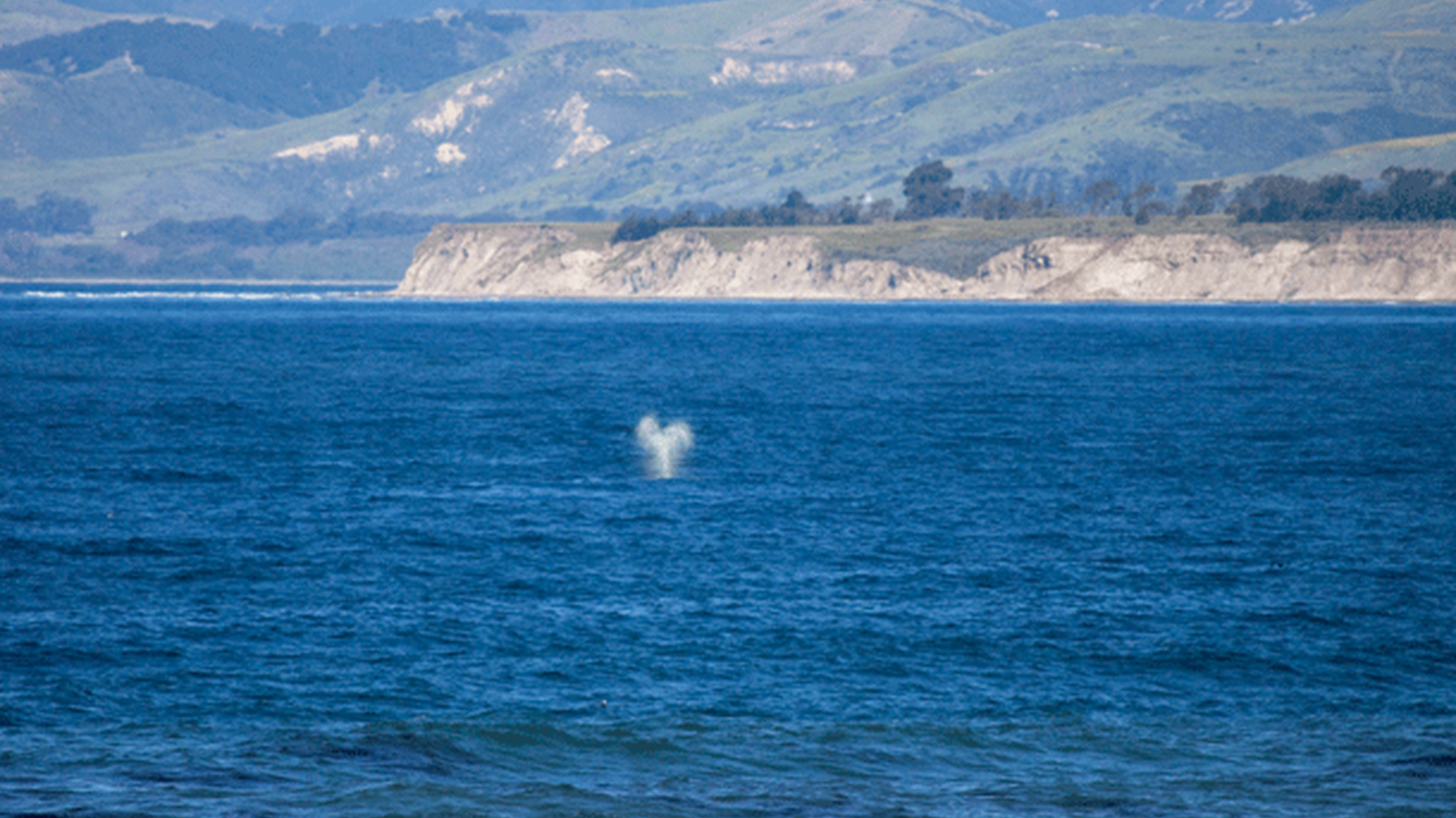It’s still too early to tell what environmental impact the oil spill at Refugio beach may have on the Santa Barbara Channel. Thousands of gallons of crude leaked into the sea May 19th. Since then, 40 live and 22 dead birds have been collected, as well as 28 live and 14 dead mammals, including seals, sea lions and dolphins. Updated numbers of oiled wildlife can be found here.
 Dr. Rachel Cartwright is worried about the larger animals, like gray whales. She’s a conservation biologist at California State University Channel Islands, and lecturer in the biology department. She specializes in whales and their calves who migrate through the Santa Barbara Channel, and monitors the overall health and well being of our oceans. She believes the overall effects of this spill might not be fully understood for quite some time.
Dr. Rachel Cartwright is worried about the larger animals, like gray whales. She’s a conservation biologist at California State University Channel Islands, and lecturer in the biology department. She specializes in whales and their calves who migrate through the Santa Barbara Channel, and monitors the overall health and well being of our oceans. She believes the overall effects of this spill might not be fully understood for quite some time.
Cartwright’s main concern? “How much of it stays in the system, and how will it work through that system?”
She says while the short term worry is those animals that could have been oiled by the initial spill, the long term worry is what happens if that oil disperses. “If what they’ve done is inhaled fumes it might not get them initially,” she says about gray whales, “but may lead to increased bacterial infections in their lungs. We could see this protracted in the next few months,” she says.
But the whales coming through the Santa Barbara Channel aren’t sticking around that long. They are migrating from Baja California, up the shoreline to the Bering Sea. “The Santa Barbara is a bottleneck in that migration,” says Cartwright.
While the Oiled Wildlife Care Network has been regularly updating the numbers of birds and mammals rescued and rehabilitated, Cartwright says that’s only the tip of the iceberg.
“Most marine animals die at sea. What we see washing up on the beaches is generally only a small percentage of what has died at sea and sunk.”

The good news, Cartwright says? Technological resources are available to track the spill and watch it move through the food chain. That’s exactly what she’ll be doing.
“Just because we don’t see it, doesn’t mean the oil has been removed from the system.”

